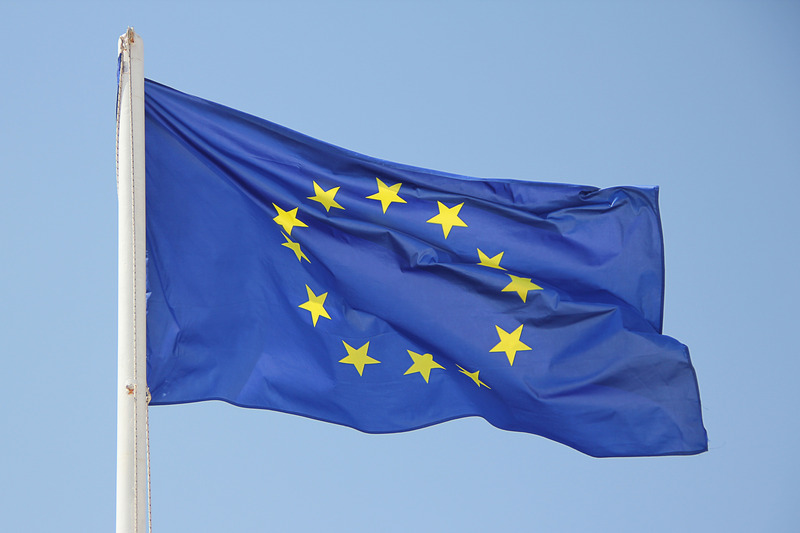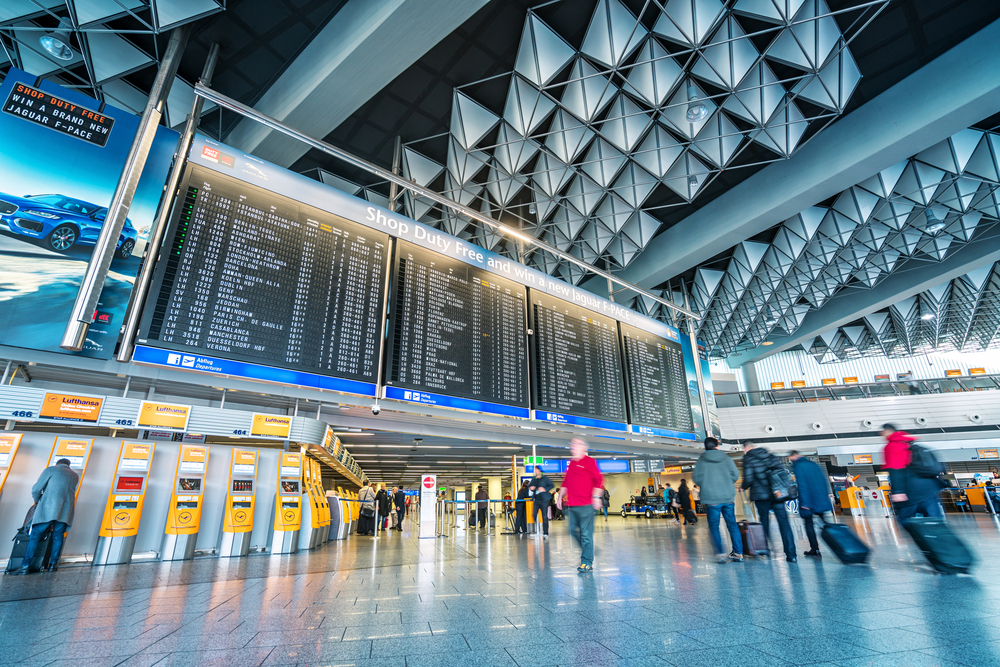Search Results forforwardkeys
ForwardKeys releases Lunar New Year travel trends report
Travel research group ForwardKeys presents its travel trends report for the Lunar New Year, showing significant post-pandemic changes. Current data reveals a significant post-pandemic rebound in Chinese outbound travel for the upcoming Chinese New Year (CNY) vacation. The eight-day holiday from the 28th of January to the 4th of February has already prompted a surge in departures, with peaks recorded on the 18th and 25th of January as many travellers make their journeys in advance of the festivities. According to China market analyst Nancy Dai: “The longer holiday period for CNY 2025, part of a government initiative to stimulate tourism and cultural exchange, is clearly having a positive impact on travel patterns. We're seeing a clear trend of travellers departing earlier than the official holiday starts to avoid the rush, with another peak expected on 30th January, most likely driven by those seeking short-haul getaways after spending the first days of the holiday at home or with family.” Eight relevant trends As Chinese travellers take to the skies to enjoy an extended break, we’ve looked at some of the trends that are emerging from the Chinese New Year period in 2025, and how the data compares to last year’s holiday, and to pre-pandemic travel patterns. Regional travel is close to recovery for CNY 2025 From 13th January to 16th February, we see a +48% year-on-year increase in outbound travel from China to other Asian destinations, closing the gap with 2019 levels to just 8%. Visa-free Destinations exceed pre-pandemic numbers ForwardKeys analysis highlights Malaysia, Singapore, and the UAE as standout performers, with growth of +41 percent, +26 percent, and +14 percent respectively, compared to their performance in 2019. Chinese travellers to Japan double compared to last year The depreciation of the Yen has made Japan an incredibly attractive option for Chinese travellers, resulting in a 104 percent increase compared to 2024, 20 percent higher than 2019. Russia shows the largest recovery outside Asia Chinese travel to Russia is up by 30 percent from 2024 and 39 percent above pre-pandemic levels, driven by the rising popularity of winter destinations, eased visa restrictions, and increased flight capacity. Europe welcomes more Chinese travellers in 2025 As Chinese travellers embrace more long-haul options, Europe sees substantial growth over 2024 for France (+35 percent), the UK (+32 percent), Spain (+32 percent), Italy (+24 percent) and Germany (+20 percent). Seat capacity gains drive Chinese travel recovery to North America Increased seat capacity from China to Canada (+165 percent) and the USA (+42 percent) compared to 2024 has made North America more accessible to Chinese travellers this year, resulting in an uplift in visitors. More Chinese travellers go solo than pre-pandemic We're seeing an increase in solo travellers and couples for regional travel, reflecting a growing preference among Chinese travellers for more independent travel experiences. Traditional group travel is in sharp decline this CNY Larger group travel involving six or more travellers is significantly down from 2019, showing a drop of 44 percent for regional travel and 52 percent for long-haul. This suggests that organised tours are less relevant to today’s Chinese travellers.
ForwardKeys announces plans to produce regular travel retail intelligence
Global travel analyst ForwardKeys announced a new partnership with The Moodie Davitt Report to produce regular business intelligence to serve partners across the travel retail ecosystem. Output from the partnership includes The International Travel Outlook Report, a quarterly update on the latest international travel forecasts. The report notably features an industry-first 36-month forecast designed to help industry stakeholders adapt their strategies to traveller behaviour with a longer-term lens. Relevant insights are presented for Europe, Asia Pacific, Middle East & Africa and the Americas. Each regional outlook highlights the leading countries, airports and nationalities driving travel growth. Necessary information ForwardKeys’ vice-president for travel retail Marina Giuliano said: “Our clients can now enhance efficiency, reduce costs and improve decision-making up to three years into the future, which was not possible before. These forecasts enable brands and retailers to adapt strategy to the specific preferences and habits of different customer groups. Updates on market changes ensure decisions are always based on the freshest data available.” The team’s travel retail consultant Jérôme Goldberg added: “The demand for granular, future-looking forecasts has never been higher. As international traffic has moved from post-COVID recovery to growth, markets, routes and travellers have changed dramatically.” Goldberg further explained that having precise data to guide operations, from production planning to the presence of the right inventory at the right airports over the next 36 months, will be pivotal for brands and retailers navigating these market changes and optimising business development and marketing strategies. Likewise, Jess Allerton, report research director for The Moodie Davitt Report, said: “We are delighted to partner with ForwardKeys to produce this quarterly Travel Outlook Report, designed to keep the industry up to date on the latest travel forecasts. We hope it can help guide our partners in the industry to a better understanding of the dynamic travel market worldwide and the many opportunities it will present.” What’s going to be in the first edition? In the soon-to-be-released first edition, the report focuses on the Chinese traveller, highlighting the travel retail and category opportunities based on where travellers depart from. ForwardKeys’ forecasts leverage daily-refreshed booking data and proprietary capacity forecasts which offer a dynamic and responsive outlook on future traveller behaviour compared to traditional industry methods that rely heavily on historical data. The 36-month forecast complements ForwardKeys more granular 12-month forecast which offers unmatched global coverage spanning 4,750 airports and 900 airlines, differentiating domestic and international traffic.
ForwardKeys report shows Asia Pacific tourism driving global arrivals
ForwardKeys announced that tourism in the Asia Pacific is driving the current resurgence in global tourist arrivals. The knowledge partner of the World Travel and Tourism Council (WTTC) presenter their report at this year's WTTC Global Summit in Perth, Australia. The report shows that international arrivals are up by 16 percent from 2023, largely fuelled by the opening of travel within the Asia Pacific following the pandemic. WTTC president and chief executive Julia Simpson said of the report: “The region has an unparalleled opportunity to grow its Travel & Tourism sector in a way that not only drives economic growth but sets the standard for sustainability. She added that the WTTC expects the tourism sector’s contribution to the regional economy to hit US$3.22 trillion, with up to 191 million individuals employed in the industry. Slow but sure recovery While the region still lags behind pre-pandemic levels, the current pace of year-on-year growth signals continued recovery and highlights the pent-up demand for travel within APAC. This positive trend is set to continue through the end of the year, with double-digit growth in arrivals to China, Malaysia, Japan, Thailand and Indonesia fuelling a projected 19 percent overall increase. Meanwhile, Oceania sees an increase of 10 percent, with arrivals to New Zealand and Australia being key drivers. What Oceania is doing right According to ForwardKeys’ director of intelligence and marketing Olivier Ponti: “Destinations like Australia and New Zealand, with a distinct peak season, face the challenge of balancing demand throughout the year. Effective data-driven strategies are crucial for mitigating the negative impacts of seasonal fluctuations, such as overcrowding during peak periods and underutilised resources during the off-season.” Ponti added that sustainability long-term growth in the area may be achieved through the diversification of source markets and promoting year-round attractions. A key factor in Australia's tourism boom is the significant expansion of air connectivity. Airlines have increased overall capacity on international routes into the country by eight percent for the latter part of 2024, with higher growth in capacity from regional hubs like Thailand, Japan, Hong Kong, Vietnam, China, and Singapore. Australia's tourism industry experiences a distinct seasonal ebb and flow. While the end-of-year holidays mark a peak period for travel, the southern hemisphere's winter months see a significant dip in tourist activity. This pronounced seasonality contrasts sharply with destinations like Japan, which enjoys a more consistent flow of visitors throughout the year. New Zealand, similar to Australia, experiences a pronounced peak season during the end-of-year holidays, but with an even sharper decline during its winter months, highlighting the challenges and opportunities presented by seasonal variations in tourism.
ForwardKeys: Asia Pacific travel gains momentum
'ForwardKeys’ Director of Intelligence & Marketing, Olivier Ponti, unveiled compelling insights into Asia Pacific travel trends at the PATA Annual Summit 2024 in Macau. Highlighting the region's remarkable recovery post-COVID-19, Ponti's presentation underscored the pivotal role of increased flight connectivity, innovative marketing strategies, and relaxed visa requirements. Steady Recovery in Flight Connectivity Connectivity in the Asia-Pacific region, which has faced significant challenges, is rebounding swiftly. As of the first quarter of 2024, the region’s seat capacity recovery is just 13% shy of 2019 levels. Notably, the Asia-Pacific outpaced global seat capacity growth, registering a 7-percentage point increase compared to the global average of 3 percentage points between Q4 2023 and Q1 2024. Declining Airfares Amid Growing Demand As seat capacity gradually rebounds, airfares have shown a consistent downward trend since 2023, despite remaining higher than 2019 levels due to limited capacity and strong demand. This trend was particularly evident during significant events such as Chinese New Year and major concerts in Singapore. For example, Taylor Swift's concert in Singapore in early March led to a 17% increase in travel from Southeast Asia, contrasting with a 27% decline in the rest of the month. Visa Facilitation Draws in Chinese Travellers Chinese outbound travel during the recent Labour Day holiday indicates a mere 16% decrease compared to the levels recorded in 2019. The relaxation of visa policies has notably enhanced Chinese travel to numerous destinations. Data revealed a 212% surge in travel from China to Kazakhstan, with notable increases to Singapore, Azerbaijan, Malaysia, and the Maldives. However, Thailand's slower recovery is attributed to ongoing safety concerns. Innovative Marketing Strategies Stimulate Demand Air Macao's pandemic-era promotions, such as 'buy one, get one free' tickets, successfully attracted mainland Chinese couples and continue to do so post-pandemic. Their new ‘Travel Pass’ offer for affordable travel from specific cities to Macau has further increased couple bookings by 4 percentage points compared to 2019 levels. A Positive Outlook for Summer 2024 Travel The forward-looking travel outlook for the Asia-Pacific region remains positive, although recovery is still ongoing. As of April 27, summer travel bookings to APAC are down by only 12% compared to 2019 levels. In contrast, travel to Europe and the Americas has fully rebounded, and travel to Africa and the Middle East is down by just 5%. PATA’s CEO, Noor Ahmad Hamid commented, "The travel industry can effectively attract tourism by harnessing the power of visa facilitation, strategic marketing, and leveraging major events. These elements are crucial in driving the recovery and growth of tourism in the Asia-Pacific region." Olivier Ponti added, "Our data highlights a robust recovery trajectory in the Asia-Pacific region. The 7-percentage point increase in seat capacity from Q4 2023 to Q1 2024 and the noticeable decline in airfares, driven by strategic marketing efforts, underscore the region's resilience and adaptability."
Top travel trends and destination rankings in summer ‘23 – ForwardKeys
ForwardKeys, the leading travel analytics firm has identified six major trends in global air travel this summer. They are revealed by an analysis of the top destinations and top origin markets compared to last year and to pre-pandemic levels in 2019. The major trends are: US dominance Patchy post-pandemic recovery The Far East revving up Resilience of classic beach destinations The heatwave Worldwide, summer (1st July – 31st August) flight bookings were 23% behind pre-pandemic (2019) levels and 31% ahead of last year. US Dominates the Ranking In the ranking of the most visited country destinations by share of scheduled flight bookings, the USA was top of the list by a substantial margin, attracting 11% of all international visitors this summer (1st July – 31st August). It was followed by Spain, the UK, Italy, Japan, France, Mexico, Germany, Canada and Türkiye. The USA was even more dominant in outbound travel. In the ranking of source markets, the USA was top with an 18% share of scheduled flight bookings. It was followed by Germany, the UK, Canada, France, South Korea, China, Japan, Spain and Italy. Patchy Recovery For most countries, travel was up on last year by a double-digit figure, but volumes have yet to reach pre-pandemic levels. A closer look at the world’s traditionally largest outbound travel markets reveals the patchy nature of the recovery. The US, 17% up on last year, was just 1% down on 2019 volumes. However, other traditionally large source markets were much further off the pace, Germany, 21% down on pre-pandemic levels, the UK 20% down, France, 17% down, South Korea 28% down, China, 67% down Japan 53% down and Italy 24% down. The Far East Revving Up Also striking are the differences in travel volumes compared to last year, which reveal how much the Far East was still in lockdown but is now revving up, with all three Asian countries in the top ten source markets, namely South Korea, China and Japan, showing at least a triple-digit growth rate compared to 2022. While the Chinese outbound travel market has been amongst the slowest in the world to recover, it still manages to hit 7th place thanks to its sheer size. Classic Beach Destinations are Most Resilient Looking at the destinations which have done best against 2019 levels, the list is dominated by countries famous for their beaches and warm waters. The top ten all exceeded the summer of 2019 and most showed strong growth from last year. Top of the list is Costa Rica, 19% up on 2019 and 15% up on 2022. It is followed by the Dominican Republic, Columbia, Jamaica, Puerto Rico, Argentina, Greece, Tanzania, the Bahamas and Mexico. Throughout the pandemic, leisure travel to beach destinations proved to be the most resilient, with many highly tourism dependent economies in the Caribbean and Gulf of Mexico working hard to keep their borders open and the tourists coming; and their efforts have certainly paid off. The same has also been true of Greece, Portugal, and the UAE. Limited Impact of the Heatwave While the unusually high temperatures and the outbreak of wildfires in Greece and Portugal made a very substantial impact on television screens; they made only a limited impact on tourism, as most holidaymakers had already booked. A spate of cancellations affected Rhodes, but flight bookings recovered to normal levels in a matter of weeks. While bookings for Northern Europe and the Nordic region were 16% and 17% behind 2019, they demonstrated better performance in the late bookings market, probably influenced by the heatwave. Olivier Ponti, VP Insights, ForwardKeys, said: “Throughout the pandemic, US travellers were an economic lifeline for many Caribbean destinations. As other parts of the world relaxed their entry restrictions, Americans came. This summer, they have been extremely helpful to many European destinations. Now, the world’s other major tourism powerhouse, China, is starting to revive. Looking ahead to Q4 and further to 2024, I am increasingly optimistic. Right now, global flight bookings for the last three months of the year are just 4% behind 2019 and for the first three months of 2024 are 3% ahead. The world region that shows the greatest promise in Q4 is the Middle East, to where flight bookings are 37% ahead of 2019. It is followed by Central America, 33% ahead and the Caribbean, 24% ahead.” To view the release on the web, click here.
ForwardKeys: Chinese arrivals in EU continue to rise
Data provider ForwardKeys has reported European travel is on the rise despite the slow-down in the Chinese economy and concerns about Brexit. Chinese tourists continue to put Europe at the top of their favourite destinations even with the relative slow-down in the economy and concerns regarding Brexit, according to the latest figures from the European Travel Commission (ETC) in collaboration with ForwardKeys. The latest figures show that the EU-China Tourism Year 2018, designed to promote the EU as a tourism destination to the rapidly-growing Chinese market, continues to deliver success. The data shows there was a 5.1% year-on-year increase in Chinese arrivals in EU destinations during January-December 2018. Olivier Jager, CEO, ForwardKeys, commented: “Our findings confirm what a concerted effort to boost tourism can achieve. It also appears to have lasting effects, as we can see in the forward booking figures.” “The growth in Chinese travellers has been solid” Eduardo Santander, executive director at ETC, added: “The 2018 EU-China Tourism Year initiative has been extremely successful. And we continue to see the benefits in 2019. The growth in Chinese travellers has been solid, and the near future, judging by current bookings, will see the EU continuing to increase its share of this valuable market, not just to traditional destinations, but lesser-known and emerging ones as well.” In 2018, the top three EU destinations in terms of volume of Chinese arrivals were the UK (up 2.4%), Germany (up 2.6%) and France (up 7.7%). The three most growing destinations were Croatia (up 45.7%), Estonia (up 35.8%) and Hungary (up 25.1%). Forward bookings also look robust. As of 31 December 2018, Chinese bookings to the EU for the first four months of 2019 are 16.9% ahead of where they were at the end of 2017. This compares very favourably to the global trend, which is 9.3% ahead. In the context of Brexit, it is interesting to note that if the UK were excluded from the data, the performance of the EU would look even stronger, with arrivals in the whole of 2018 up 5.8%, as opposed to up 5.1% with the UK included. Similarly, looking ahead, forward bookings are 17.7% ahead for the period January-April 2019, as opposed to 16.9% with the UK included.
ForwardKeys sees growth in Europe’s regional airports
Bordeaux International Airport, France According to the latest findings by travel data specialist ForwardKeys, Europe’s regional airports are taking off in popularity. In the group’s latest findings, it attributed the boost to specific events like the 2018 FIFA World Cup in Russia, as well as the growing popularity of travel, increasing pressure on the major airports, human curiosity to keep discovering new places, and the success of low-cost airlines. “Demand is still going to outstrip capacity” ForwardKeys CEO and co-founder, Olivier Jager, said: “Low-cost travel is constantly increasing its market share and driving a lot of regional and trans-Atlantic expansion, but demand is still going to outstrip capacity. “The regional expansion trend seems irresistible and many European destinations are already facing the problems of ‘overtourism’ as seen in Barcelona and Dubrovnik. There needs to be combined efforts and vision from airports, airlines and destinations simultaneously to capitalise on the economic benefits and manage the growth in a sustainable way.” In addition to the data, the World Travel & Tourism Council (WTTC) also said that the direct economic contribution of European travel was up 3.8% in 2017 — significantly faster than the overall GDP growth of the EU, which was only up 2.3%. Another encouraging note for the economy is the increasing demand for international seat capacity. In 2018, intra-European seat capacity is up 6.0% on last year. The growth has been strongest in Central/Eastern Europe, up 12.7%. In Southern Europe, it is up 8.8%; in Western Europe, it is up 5.4% and in Northern Europe, it is up 3.0%. Many regional airports across Europe showed significant growth in terms of intra-European capacity. Regional airports like Aarhus, Bordeaux, Ufa and Antalya are top performers within their respective sub-regions. Furthermore, Russia has ambitious expansion plans for its regional airports, taking advantage of the momentum from the FIFA World Cup. It was the smaller European airports where capacity grew quickest, with the ten largest European airports showing slower growth. Although the seat volume of long-haul flights is substantially less than that on intra-regional flights, in 2018, the seating capacity to long-haul destinations from Europe is up even more by 9.1%.
ForwardKeys: Thanksgiving travel to boost UK visits from the US
ForwardKeys has revealed that the UK could look forward to a rise in visitors from the United States during Thanksgiving week. According to data from ForwardKeys, flight bookings from the US to the UK are up 20% from Sunday 18 to Saturday 24 November 2018 compared to the week when Thanksgiving fell last year. The increase echoes a longer-term trend with forward bookings from the US to the UK tracking up 27% from November 2018 to April 2019 compared to the same period previously. The US is the UK’s most valuable inbound visitor market for tourism spend. Visitors from the US spent a record GBP 3.6 billion (USD 4.6 bn) across the UK last year, up 9% on the previous year. Visits from the US grew 13% to 3.9 million in 2017 — the highest since 2000. “We want the UK to be the number one destination for US travellers” VisitBritain’s director, Patricia Yates, commented: “We want the UK to be the number one destination for US travellers so it is great to see forward bookings looking strong in the coming weeks and months from our most valuable visitor market. “Working with partners including American Airlines, British Airways, Norwegian Air and Virgin Atlantic, we are boosting route connectivity and seat capacity, making it easier for US visitors to travel and to explore further through regional gateways such as Manchester, driving growth from tourism across our nations and regions.” VisitBritain’s global campaign ‘I Travel For…’ launched earlier this year in the US. It aims to shine the spotlight on unexpected experiences and less explored destinations across the UK to drive tourism across the nations and regions. The bureau is also working with content partners in the US to promote Britain’s food and drink, culture, countryside and football-related visitor experiences — telling the stories of destinations and inspiring visitors to discover more, travel further and stay longer. Tourism is worth GBP 127 billion to the UK economy, creating jobs and boosting economic growth across its nations and regions.
ForwardKeys four essential tips to maximise Chinese arrivals
Industry analysts ForwardKeys have revealed their insights into the habits of the Chinese global outbound traveller, unveiling what it believes to be the “four important factors that destinations need to consider if they are to secure a larger share of the Chinese outbound tourism pie”. Simply put they are as follows: the development of direct flights, visa convenience, sensitivity to the Chinese holiday calendar and a reputation for being a safe place to visit – this last one is not to be taken lightly. Following the tragic tour boat accident in July when 47 Chinese were killed, 600,000 trips from China to Thailand were cancelled. Non-stop flights ForwardKeys cited the rise in Chinese travel to Ireland during May-August 2018 to show how a non-stop service can be invaluable. Indeed, the country experienced a negative 2017 and a decrease of 7.8% in the number of Chinese arrivals during January-April 2018. However, three new direct routes (from Cathay Pacific and Hainan Airlines) put the trend in reverse leading to in 4.1% uplift in Chinese visitor arrivals during May-August. Visas The benefits of visa reform were particularly notable in Serbia which experienced a 173% increase in flight arrivals from China in 2017 after the country waived visas for Chinese tourists on 15 January. Serbia also saw triple-digit growth in Chinese arrivals during the first eight months of 2018. ForwardKeys has previously reported other substantial increases in Chinese tourism due to visa relaxation policies, most notably to Morocco and the United Arab Emirates. Chinese holidays Sensitivity to the Chinese calendar is important because holidays such as the Chinese New Year and China’s National Day Golden Week see very large numbers of people seeking overseas trips in order to utilise both public holidays and annual leave. Olivier Ponti, VP of insights at ForwardKeys, said: “A good understanding of the subtleties of Chinese holidays will greatly help the industry to plan, anticipate and capitalise on demand. Destination marketeers can better time their campaigns, hotel managers can better prepare to make Chinese visitors feel welcome and retailers can stock items more likely to appeal to the Chinese tourist.” Security Another example of the importance of security is, after a spate of terror attacks in Europe in 2015 and 2016, Chinese visitors stayed away. However, as those destinations have been seen to be safer, the Chinese market has recovered. For example, Turkey, which is benefiting from the China-Turkey Tourism Year 2018 and an improved security image, has seen a 69% year-on-year spike in arrivals between January and August this year. According to the World Tourism Organisation (UNWTO), 223 million global outbound trips were made by mainland Chinese travellers in 2017. They spent EUR 228 billion (USD 257 billion) last year, placing China at the top of UNWTO’s list of high-spending source markets for the seventh year in a row.
No Event found matching your search.
Return To Home









